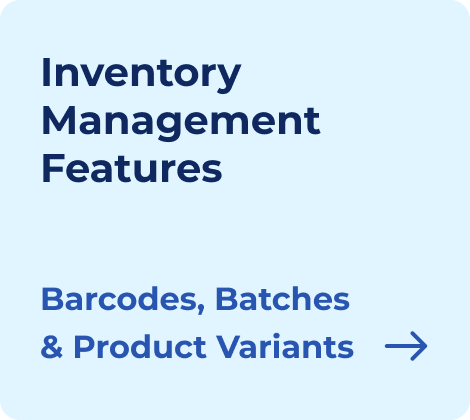When you run a business, and you know that your business depends on multiple suppliers, keep track of contracts, deadlines, and compliance — all these requirements will make you feel like this is an endless juggling act. Sometimes, it becomes hard to stay up to date, and you might have missed days when you missed invoices, delayed shipments, or issues in compliance that can throw everything off balance.
This can cost you time, money, and trust. After facing these problems, if you are still handling everything manually and managing your vendors through chains of emails, you are investing more time fixing issues than focusing on growth.
So, entrepreneurs understand the need of the hour and try to improve their business approaches. The Verified Market Research report says that the Global Vendor Management Software (VMS) market was valued at $7.7 billion in 2023 and is expected to grow to $17.15 billion by 2030, with a CAGR of 14.75%.
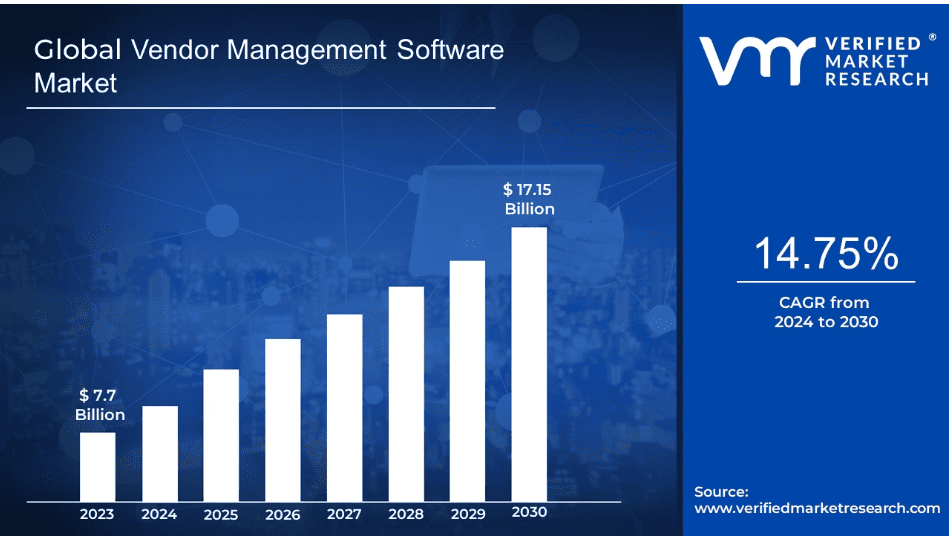
This growth shows that companies are moving away from traditional methods and want to shift their focus more on advanced software and digitization, which helps them reduce manual tasks and save time.
With businesses shifting their focus on automation and AI-driven vendor tracking, vendor management software (VMS) has become the game changer. It helps your companies streamline processes, build supplier relationships, and centralize the system to help reduce your risk and delays and focus on creating a more efficient supply chain.
Gartner report shows that 70% of supply chain professionals highlighted that getting approval for IT investment is becoming easier. This indicates that more companies understand the growing need for automation tools like Vendor Management Software to improve efficiency and cost management.
This guide provides a comprehensive overview of vendor management software, including its benefits, features, solutions, future trends, and how it can benefit your business. Let’s dive in.
- Vendor Management Software Explained Simply
- How Is Vendor Management Solution Beneficial to Your Business?
- How Does Vendor Management Platform Differ from Traditional Tracking Methods?
- Must-Have Features of Vendor Management Systems
- Top Vendor Management Software and Platforms to Consider
- How to Choose the Right Vendor Management Software Solution
- 5 Key Benefits of Using Vendor Management Software
- Conclusion
- Frequently Asked Questions on Vendor Management Software
- List of Resources
Vendor Management Software Explained Simply
Vendor Management Software is a digital tool designed to help you manage your business with third-party vendors. It automates relationships, procurement activities, and supplier contracts. It is a central hub for tracking vendor information, checking supplier performance, ensuring compliance, and streamlining procurement workflows.
Vendor management software is vital in procurement management because it helps increase transparency, accountability, and efficiency. When outsourcing raw materials, services, and production, you must rely on vendors, so maintaining a good relationship with the supplier is very important.
When you implement VMS in your system, you gain visibility of vendor activities, including vendor managed inventory. This allows you to optimize procurement strategies and lower the risk of supplier dependencies.
Imagine you are starting a clothing brand and need to source fabric, buttons, and packaging materials from multiple suppliers. Without a structured system, you might:
- Track orders through scattered emails.
- Juggle multiple invoices and payment deadlines.
- Struggle to compare supplier performance and pricing.
Now, consider using vendor management software (VMS) — it’s like having a digital assistant that organizes all vendor-related tasks in one place.
For example:
- You place an order for cotton fabric through the system, and it automatically tracks order status.
- It alerts you if a supplier delays shipment, so you can adjust production timelines.
- You compare different fabric suppliers based on price, quality, and delivery speed to choose the best one.
By using VMS, you prevent miscommunication, save time, and maintain strong supplier relationships — essential for scaling your business smoothly.
How Is Vendor Management Solution Beneficial to Your Business?
| Challenge | VMS Solution |
Onboarding unreliable vendors can lead to delays and quality issues |
Digitally qualify and onboard trusted suppliers based on your requirements |
Manually managing vendor approvals and contract renewals is time-consuming |
Automate approval and renewal processes to ensure smooth vendor management |
Tracking vendor compliance with industry standards and legal requirements is complex |
Use document tracking to verify compliance with policies, contracts, and regulations |
Poor supplier performance affects operational efficiency and delivery timelines |
Monitor supplier performance metrics, on-time deliveries, and SLAs in real time |
Communication gaps between teams and vendors cause misunderstandings |
Enable seamless collaboration between teams and vendors on a unified platform |
Lack of data insights makes vendor negotiations less effective |
Access historical data, market trends, and AI-driven analytics for smarter negotiations |
How Does Vendor Management Platform Differ from Traditional Tracking Methods?
When you handle your vendors using a traditional method, all the work is done manually, such as using an Excel sheet, waiting for emails, which causes progress delays, and calling them unprofessionally, which leads to many misunderstandings. This approach is outdated, has many risks, and it is difficult to track everything simultaneously.
Let us now check the table below and see the difference between the traditional method and the modern method of managing vendors:
| Properties | Traditional Method | Modern Method |
Data Management |
Stored in register books and plastic files across multiple spreadsheets |
Stores in the cloud, centralized and easily accessible anytime |
Onboarding Vendors |
Manual review, human error, and slow process of approval |
Automatic approvals, set qualification criteria, and instant approval |
Tracking Performance |
Too much periodic evaluation and subjective reviews |
All are driven by AI, vendor scorecards, and real-time analytics |
Stored physically in a cabinet, there is a risk of losing or misplacing it |
Automatic renewal of contracts and storing everything digitally |
|
Monitoring Compliance |
Compliance records are checked manually for expiry |
Automatic tracking for compliance |
There is no transparency; always Incomplete and scattered data |
Automatic live reporting dashboards for end-to-end procurement |
|
Use of paper, too many human errors, sometimes fraud billing |
Detects automatically if the invoice is fraud |
|
Supplier Communication |
Working on phone calls, chats, and emails leads to misunderstanding |
Fully integrated communication dashboard for all cross-functional teams to collaborate |
Minimizing risk |
Due to working manually, there is a high risk of tracking and inconsistent data. |
AI-driven risk assessment and predictive analytics |
The Business Research Company report says organizations are rapidly implementing Vendor management software to streamline compliance tracking and minimize manual vendor-related risk tasks as regulatory requirements become more complex.
Must-Have Features of Vendor Management Systems
1. Vendor Onboarding
Onboarding vendors is very time-consuming and requires a lot of evaluation from the suppliers, such as verifying their documents and checking compliance risks. Still, if you implement VMS in your company, it will help you streamline in many ways, such as:
- By using VMS, you will not have to deal with the long offline process of pre-screening; instead, you can automate the process directly and compliance status before the approval
- Vendors will no longer have to submit endless paperwork, and VMS will instantly minimize the work by approving digitally based on the requirement.
- Many companies report significantly reducing their vendor onboarding workload by streamlining supplier integration.
2. Centralized Vendor Database Management
When you have centralized data for vendors, it always ensures that it is secure in one place, such as a folder or stored in the cloud. It protects you from any discrepancies and eliminates the risk of getting misplaced. There are also some significant advantages, such as:
- This database will help you keep vendor profiles, past transactions, contract agreements, documents, and certificates safe by storing them in one unified structure.
- You can also set automatic deadlines for due contracts, changing prices, and bargaining opportunities.
- Using this software, all your employees can work individually without depending on other teams for data.
- You can have all kinds of updates, which will be transparent within cross-functional teams, so you won’t have to deal with issues involving all your employees from different teams.
3. Automatic Compliance and Risk Management
When you keep non-compliant vendors in your company, you will face serious legal issues and financial loss or risks. Still, if you integrate this compliant policy into the VMS system, then it will minimize the risk by:
- Tracking your regulatory compliance. The system tracks and screens everything, including certifications, contacts, licenses, and scorecards, to prevent damage.
- You will also automatically receive alerts if your vendor’s compliance document expires or does not meet the set criteria.
- This software will protect you from partnering with random vendors by checking the violation breach of contract and preventing you from any loss of finance.
- Your compliance record will be stored safely and used for internal audits.
4. Tracking Vendor Performance
When you run a business, it is important to maintain high-performing suppliers and vendors. It not only improves business but also brings growth and cost efficiency. All of this can be done if you implement vendor management software because it helps in AI-powered performance analytics that includes:
- By using VMS, you will be able to check vendor scorecards, and based on that, you will be able to check timely delivery, accuracy in pricing, quality of product, and consistency in service
- You will be able to maintain predictive analytics by checking the potential disruptions of the supply chain, which will allow you to make active decisions.
- You will also be able to create unique KPIs (Key Performance Indicators) for your suppliers so that they will help you grow in business.
- By using VMS, you can continuously track the performance of the vendors, check their work progress, and alert you so that you can take corrective measures such as bargaining in contracts or even alternative supplier recommendations.
- You will also be able to create KPIs for your vendors and suppliers to help your business grow.
📌 Neytthomes, a B2B home décor brand, sources customized carpets, rugs, and wall art across India and abroad. They operate as a purchasing firm, procuring finished goods from their parent company, Extraweave, and external suppliers across India.
Previously, purchase orders were confirmed via email, invoice verification required manual cross-referencing, and orders were tracked in Excel — leading to inefficiencies and errors. Vendors also didn’t receive formal purchase orders.
With Kladana, they introduced system-generated purchase orders, improving financial planning by tracking obligations for the next three months. This streamlined operations, enhanced transparency, and strengthened vendor relationships. Vendors now receive official POs, ensuring greater accuracy, professionalism, and credibility in every transaction.

5. Contract and Payment Management
One of the biggest downfalls of contract management is a significant loss of finance. When you manually try to manage, it leads to delays, missed deadlines, miscalculations, and overpayments. However, implementing VMS in your system will help you automate creating the contracts, tracking, and creating invoices online, as well as help you track your finances. You can also have other business benefits such as:
- You can create alerts for the vendors before their contract renewals and eliminate the scope of making last-minute negotiations.
- You will have transparency in invoices and billing to reduce fraud and errors.
- The software also alerts you about vendor price changes to ensure cost savings. If there are any discrepancies in your finances, VMS provides you with all the details, such as past transactions, audit trails, and resolution workflows, to protect you from payment conflicts.
6. ERP and Procurement System Integration
Modern solutions like vendor management software with ERP, procurement, and accounting software will help you create an automatic vendor management ecosystem. This integration will allow the procurement team to sync data across various platforms by ensuring accuracy and consistency. There are ERP-integrated examples such as:
- Kladana
- SAP Ariba
- Coupa
Top Vendor Management Software and Platforms to Consider
If you are considering vendor management software for your business, here is a breakdown of some of the best vendor management systems for 2025. This table will help you choose the right fit according to your business goals and requirements, whether you have a small business, a growing start-up, or a large enterprise.
| Software | Best for | Key Features | Starting Price |
Kladana 
|
SMEs and growing startups |
An affordable cloud-based solution for vendor tracking, inventory, production, and sales management |
|
SAP Ariba 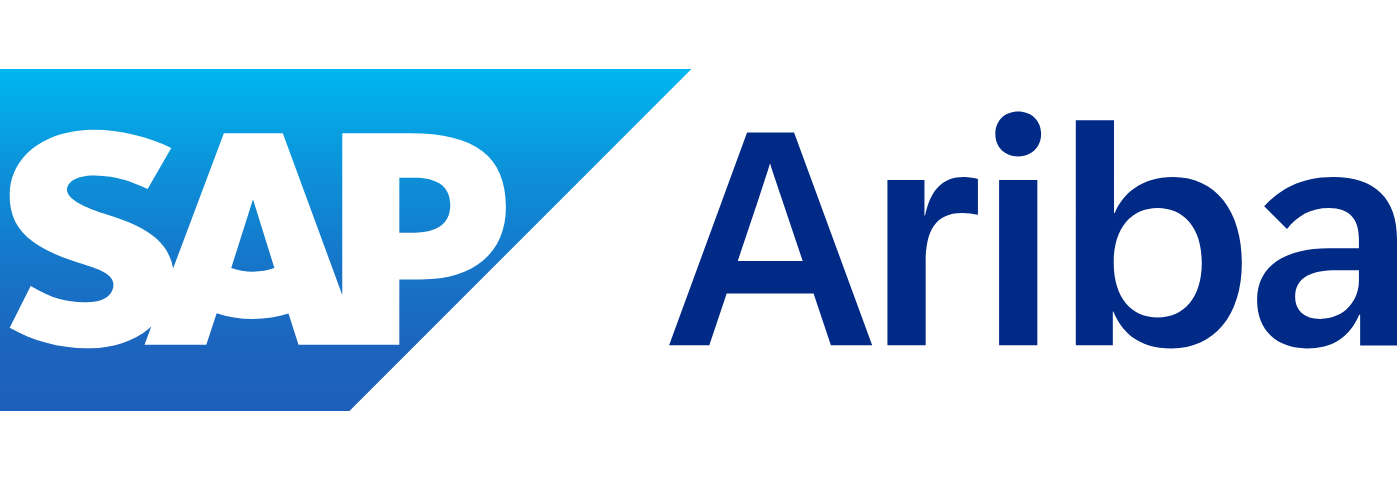
|
For large enterprises |
Provides supplier life cycle management, ERP integration, and compliance tool |
No fixed rate — custom pricing |
Coupa 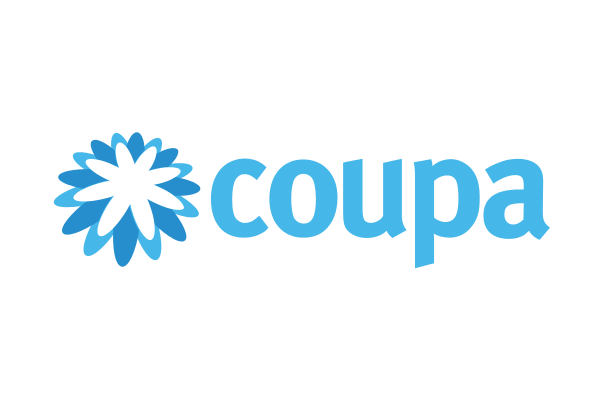
|
Medium to large enterprises |
Provides supplier management, contract management, and budget tracking |
$549 annually |
Oracle Supplier Management 
|
Global supply chain |
Provides supplier management, risk management, and master data management |
No fixed rate — custom pricing |
Kissflow Procurement 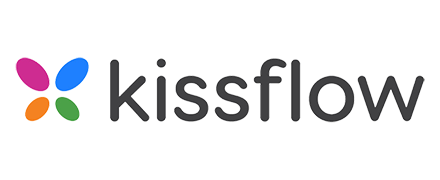
|
SMEs |
Provides vendor dashboard, approval of budget, and purchase workflow |
$1500/month |
Precoro 
|
Only Inventory focus SMEs |
Provides multi-location inventory, approval of budget, purchase order tracking, and budget controlling |
$499/month |
Each platform serves different needs. If you’re launching a new business and need an affordable yet powerful solution, Kladana is a great choice. It offers vendor management, purchasing, and third-party integrations — all in one place, with an easy setup.
For large enterprises with complex supply chains, tools like SAP Ariba and Oracle are better suited to handle large-scale operations.
📍 Tip: Before choosing a platform, check its integration with your current system, flexibility with workflows, and ease of use for cross-functional teams.
Ready To Stop Chasing Vendors and Simplify Your Operations?
Kladana offers a smart solution to manage vendors, inventory, orders, and invoices — all in one place.
🔷 Smart Vendor Tracking
Store all vendor details — contacts, pricing, contracts, and performance — in one system. Automated workflows and real-time updates prevent duplicate orders and missed deadlines.
🔷 Clear Inventory Insights
Track raw materials, warehouse transfers, and finished goods effortlessly. Stay in control of stock levels, avoiding shortages or overstocking with real-time updates.
🔷 Automated Purchase Management
Create and approve purchase orders in a couple of clicks. Orders and deliveries are tracked automatically, eliminating delays, human errors, and supplier misunderstandings.
🔷 Cost Control & Smart Spending
Compare vendors based on pricing and performance. Set automatic alerts for unpaid invoices or missed shipments to keep expenses in check.
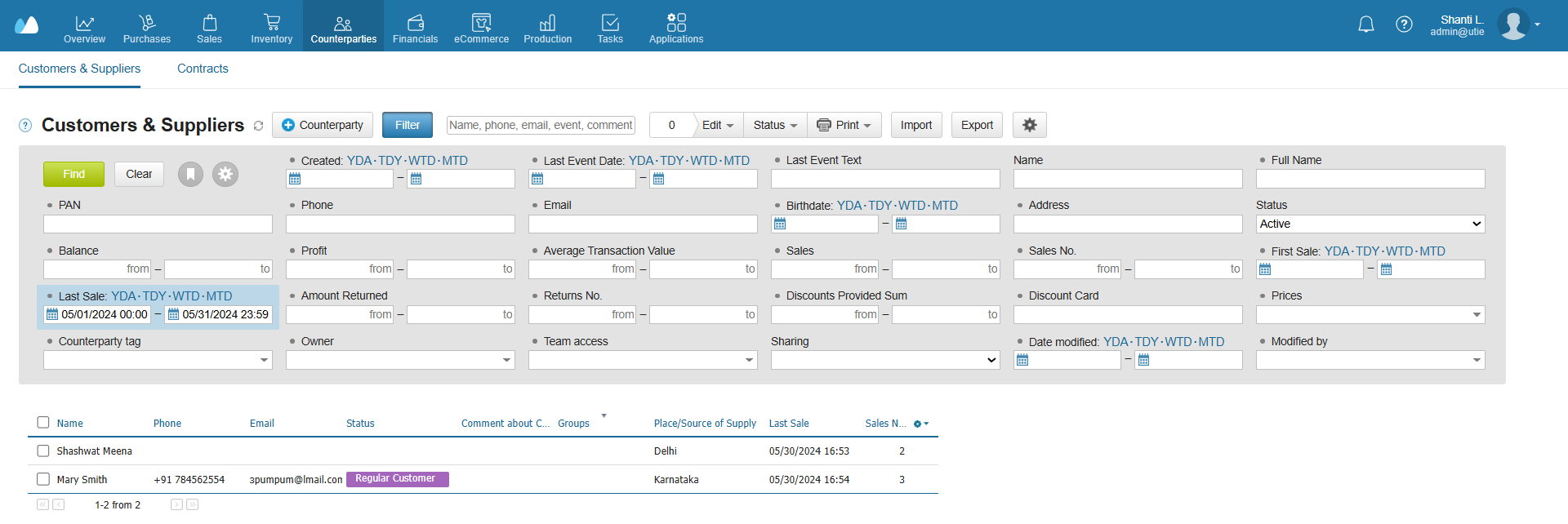
How to Choose the Right Vendor Management Software Solution
When you choose VMS for your business, it is not just about one feature; it is actually about the right fit for your employees and your organization. The right system will definitely minimize errors, save you time, and scale with you as your business grows. But the wrong one will not only slow down your system but also cause you more financial loss.
Here are some key components that you should keep in mind before you decide:
1. Understanding Your Business Needs
Ask yourself:
- How many vendors do you work with?
- Do you need better management in contracts, payments and compliance?
- Are your purchase orders getting delayed or lost in email threads?
2. Scalability and Customization
Your vendor management requirements may be different from those a year ago. Scalability is the key to growing your business, and you have to choose the software accordingly.
For example, let’s say you run a manufacturing unit and currently manage 10–15 suppliers. However, if you want to expand your business and product line or open a new warehouse, your system should be able to understand at least 50+ vendors without any complexity.
Also, it is better to check for a customization option so that you can create your own workflow approvals, vendor fields, and performance metrics. These small details will make a big difference in your day-to-day operations.
3. Cloud-Based Versus On-Premise: What’s right for you?
- Cloud-Based Solutions like Kladana are hosted online so you can access your data anytime from anywhere. They are perfect for you if you want to reduce your cost upfront, have automatic updates, and have the accessibility of remote options for your employees.
Example: If you have a cloud-based system and your procurement team is working in multiple locations or remotely, it will make sure that everyone stays on the same page.
- On-Premise Solutions are not as flexible as cloud-based software because they mainly deal with large enterprises. On-premise is preferred by large enterprises with strict control over data with limited internet access and comes typically with high maintenance and IT involvement.
✅ Final Tip: Before you commit anything, always try to use a free trial or a demo. It will help you understand the alignment of your needs and whether it will match how your team works. A clean dashboard, easy-to-use navigation, and helpful customer support often matter more than dozens of unused features.
5 Key Benefits of Using Vendor Management Software
1. Vendor Relationship Improvement
Maintaining a long-term relationship is very important if you want to set long-term business goals. A vendor management system allows businesses and vendors to collaborate and communicate better. Paying vendors on time, being transparent in negotiations, and evaluating performance will help you build trust, leading to vendor engagement and competitive pricing.
2. Procurement Efficiency and Cost Optimization
Implementing VMS in your company will help you optimize procurement by eliminating inefficiencies in sourcing, negotiations, and payment processes. Organizations that automate vendor selection payment approval cycles reduce their procurement costs by up to 30%, which helps them mitigate unnecessary expenses before opting for this software.
3. Risk Reduction
Companies operating in highly regulated industries such as manufacturing, finance, and healthcare mainly benefit from automatic compliance tracking. The built-in regulatory features check compliance. This software helps to minimize the risk of regulatory fines and damage due to vendor violations.
4. Operational Transparency
Employees can easily track and monitor the supply chain when you provide a real-time dashboard for all vendor-related work. This dashboard can prevent delays, execute projects, and reduce the risk of unreliable vendors.
5. Greater Operational Visibility
A real-time dashboard for all vendor-related operations allows organizations to monitor supply chain efficiency. Vendor issues can be flagged early, preventing project execution delays and mitigating risks associated with unreliable suppliers.
Conclusion
Therefore, vendor management software is growing rapidly and transforming procurement operations by automating vendor selection, managing contracts, negotiating, and tracking compliance. If you struggle with vendors, discover vendor management solutions today and optimize your procurement process.
Frequently Asked Questions on Vendor Management Software
If you’re new to vendor management tools and unsure about their benefits, these commonly asked questions can help you decide whether to implement one in your organization.
What is vendor management software?
Vendor Management Software (VMS) is a digital tool designed to help businesses manage and streamline their relationships with vendors and suppliers. It stores all key vendor data, including past transactions, negotiations, contract details, and payment records, in one centralized platform.
Why is a vendor management solution important for your business?
As your business grows, managing vendors manually becomes increasingly difficult and time-consuming. VMS helps reduce costs, save time, and minimize human errors by automating key processes, allowing you to focus on scaling your business more efficiently.
What features to look for while implementing VMS?
When choosing a VMS, look for essential features like:
- Vendor onboarding: Automates the onboarding process for new vendors.
- Contract and payment management: Keeps track of contracts and payment schedules.
- Performance tracking: Monitors vendor performance based on key metrics.
- Compliance and risk alerts: Helps ensure that vendors comply with regulations and identifies risks.
- ERP integration: Seamlessly integrates with your existing ERP or procurement systems.
Can a vendor management system work with my current software?
Yes, most modern VMS solutions are designed to integrate with other software, such as ERP or procurement tools. This integration allows for seamless operations across your business without needing to replace your existing systems.
How does vendor management software help with automation?
By automating key vendor management tasks, VMS reduces manual errors, speeds up approval processes, and improves workflow across teams. This leads to faster decision-making, streamlined operations, and better vendor relationships.
Will vendor management software improve supplier relationships?
Absolutely! By providing better visibility into vendor performance and communication, VMS helps you build stronger, more transparent relationships with your suppliers. It ensures that your suppliers meet expectations and deadlines, fostering trust and collaboration.
Is vendor management software suitable for small businesses?
Yes, VMS can benefit businesses of all sizes. For small businesses, VMS helps streamline processes and manage vendor relationships efficiently, even as your business grows. It provides valuable insights and allows for better control without the need for a large team.
How can VMS help me save money?
VMS helps identify areas where you might be overspending, such as on late fees, missed deliveries, or poor-performing vendors. By optimizing procurement processes and managing supplier performance, you can negotiate better contracts and reduce unnecessary costs.
How do I get started with vendor management software?
To get started, evaluate your business’s needs and choose a VMS that aligns with your goals. Many VMS providers offer free trials or demos, so you can explore the features before committing. It’s important to ensure your team is trained and that the software integrates smoothly with your existing systems.
List of Resources
- Verified Market Research — Vendor Management Software Market Size And Forecast
- Gartner — Predicts 2025: Supply Chain Operational Technology
- Business Research Company — Vendor Management Software Market Segmentation
Read‑alikes
Understanding Vendor Managed Inventory: Types, Process, Advantages, Challenges and Examples
Neytthomes’ Journey: Managing Stock Across 10 Locations and Setting Up Store Inventory in 30 Minutes
A Practical Guide to Efficient Multi‑Location Inventory Management
What is Contract & Subcontract Manufacturing? A Guide to Processes and Benefits

